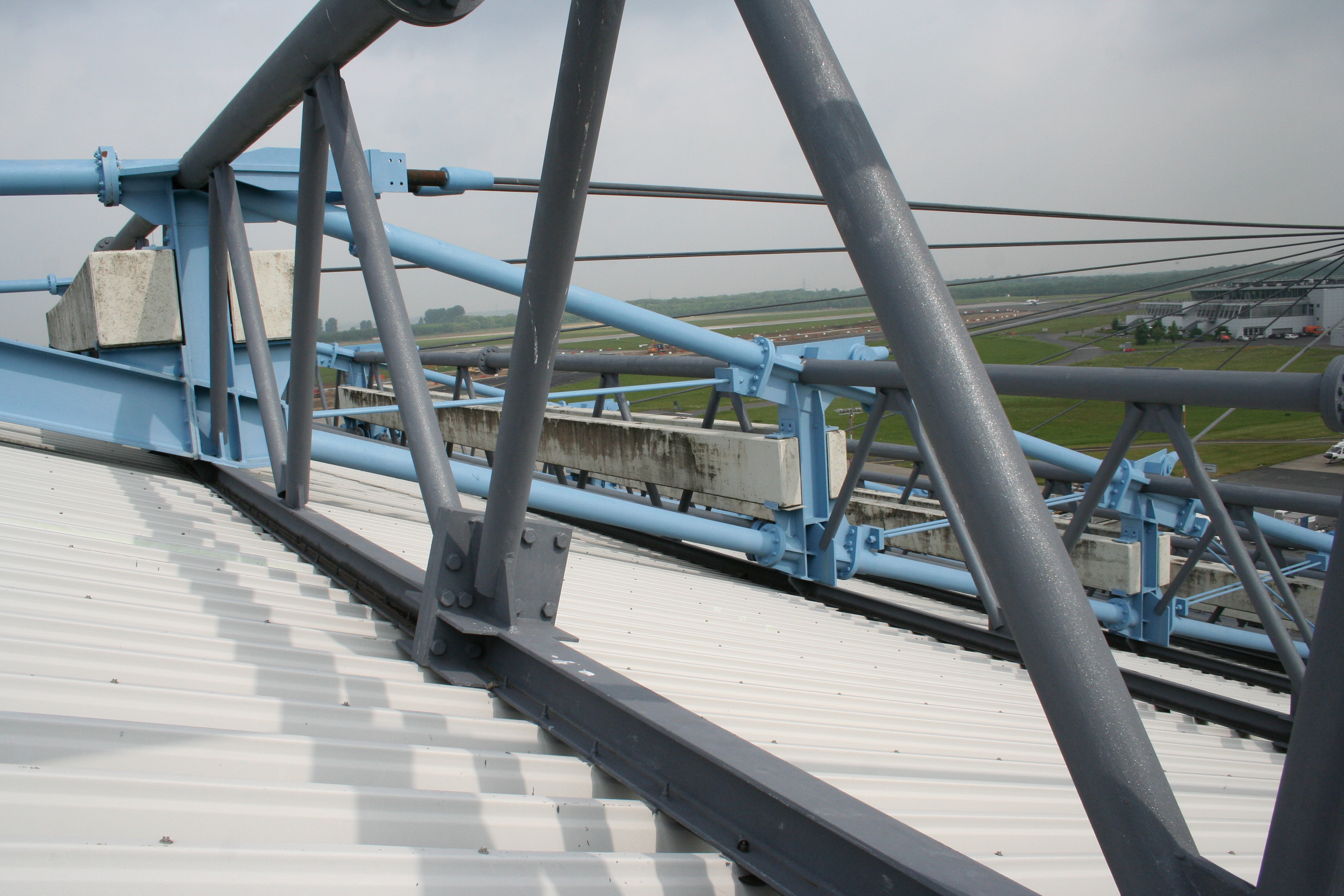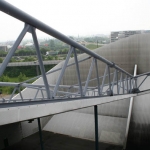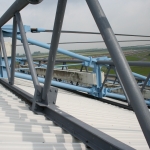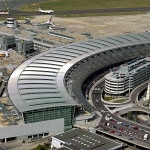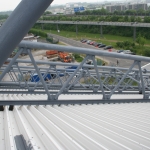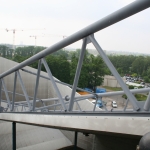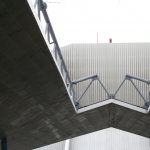Project Description
ZINGA was applied on steel structures of the Airport of Düsseldorf in 1990, namely on a hangar, with a height of more than 30 m, that serves as testing area for the engines of large commercial airplanes and of which the interior side has been insulated with panels. There is a metal structure between the insulation panels and the concrete building. The entire metal structure has been protected with ZINGA as unique system. The applied ZINGA layer thickness was 120 µm. The company Dillinger Stahlbau executed the job.
After 4 years the first inspection took place. There was no formation of rust and the loss of layer thickness was measured to be no more than 5 µm. The new hot-dip galvanisation on the contrary already showed traces of oxidation and rust. The letter from Ir. Helmut Schwarz to Zingametall, dated 27/10/1999, stating that 10 years after the application, there has been no quality complaint at all. The decrease of the ZINGA layer thickness is very slow, thanks to the zinc salts on the surface that forms an extra barrier protection or patina.
The following additional information concerning the application of ZINGA in the airport of Düsseldorf was transmitted to us by Mr. Schwarz on 17/10/00: the protection of the welding seams was carried out very soon after the welding seams had cooled down to temperatures below 40 to 35 °C and after they had been properly cleaned. Since welding seams usually do not have a rough surface, the coating began with a thin layer. Afterwards, the coating was built up to the required thickness of approx. 150 µm which complied with the layer thickness of the steel construction as specified by the customer. No further passive coatings such as paints were applied at that time. The application was carried out inside the workshops. The welding seams were checked by ultra-sound equipment by an officially recognised institution before the final assembly on site.
Some time before checking the structure’s condition in presence of the airport authority in May 2008: the steel structures on the outside of the building and on the roof have been over coated after the 10-years guarantee-period, despite the fact that there were no complaints or traces of corrosion. This was done for aesthetic reasons and given the aggressive environmental
circumstances on the outside of the building.
The topcoat consisted partly of a blue colour paint and partly of a MIO based paint.

